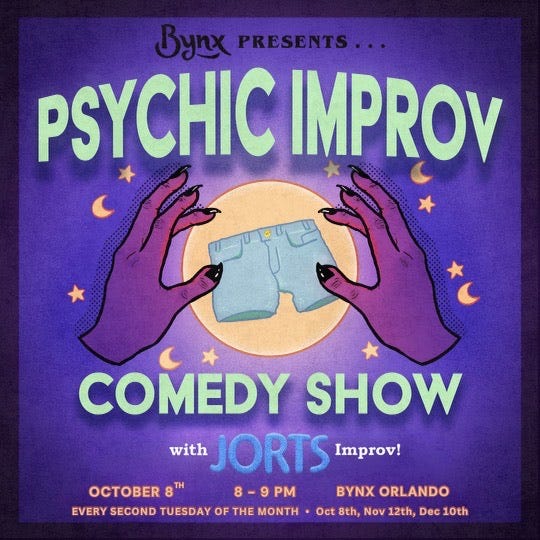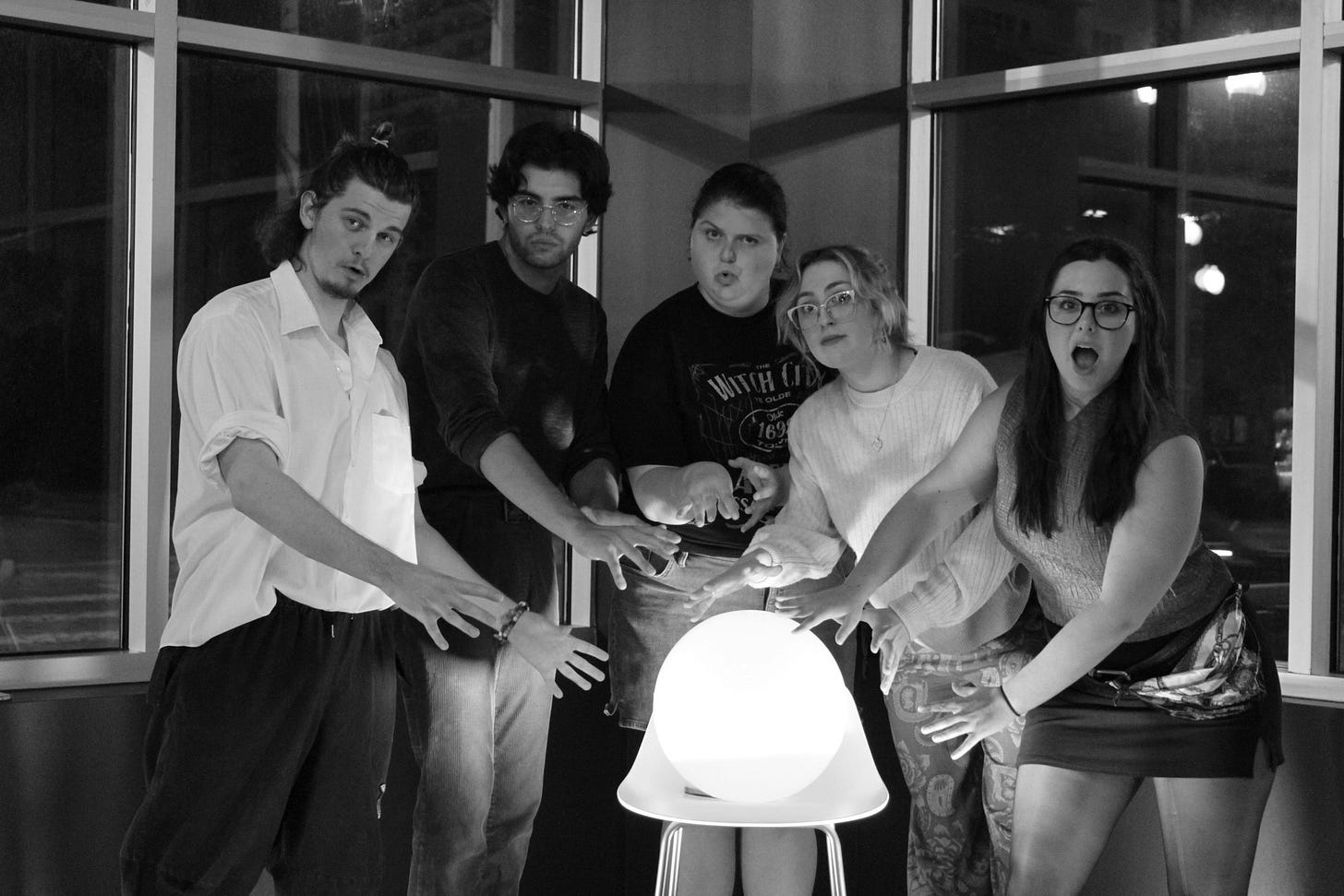Recently I have been talking with my friends about the advantages of “gimmick” based improv shows. We all seem to agree that they are not only incredibly useful, but a whole lot of fun. I hope to quickly explain why.
Firstly, what do I mean by a gimmick based show? It doesn’t particularly sound like a compliment. I think the word carries a lot of baggage because it’s often used to describe things that are low quality or of seldom use. Gimmicky gifts, for example, may be funny to open, but are frequently tossed in the trash a few days later. You don’t want to perform shows that are a bit funny in the moment, but are tossed into the audience’s mental trash a few days later. You want to perform shows that are funny, memorable, and inspiring. You want to perform shows that bring an audience back out to your next performance.
Merriam-Webster has a few definitions for “gimmick” but the closest one to what I am talking about is “a trick or device used to attract business or attention.” Even here, I like the use of the word “device” much more than “trick.” You don’t want to deceive your audience into coming if you want them to return to future shows. However, using gimmicks as a marketing device is a great strategy for making niche art more approachable.
As much as I love the improv purists who insist every show should be an uninterrupted Harold show with black tee shirts, one word of suggestion, and absolutely no props, I think it's a poor way to attract an audience. (Plus, it’s a pretty close-minded view of one of the most abstract, malleable artforms I can imagine. Improv is super young - well under 100 years old - and we need young performers to continue challenging and developing its boundaries.) Most everyday people aren’t going to have any idea what “Harold Show” or “ASSSSCAT” means. But “Improvised Jane Austen” (iO Theater), or “Shamilton, the Improvised Hip Hop Musical” (UCB) are much more intuitive. I think this is a great way to bring in new improv fans. Despite these examples, these sorts of shows, with clear branding seem rare. This rarity breeds an insestuous culture where a lot of improv shows’ entire audiences are comprised of other improvisers. Cities like Chicago or Los Angeles may have an easier time getting away with this, since their city-dwellers are a bit more predisposed to the art (though I think less so than improvisers would like to believe), but smaller cities need to clearly communicate what their show actually is.
This doesn’t mean performers should shy away from longform improv or experimental games. It just means they should consider how they are presenting these forms to an audience. For example, my team in Orlando, Florida - Jorts - just put on a “Psychic Improv Show.” We offered to see into people’s futures, but we used some pretty standard improv games to do so.

The Psychic Show
Tag-Team Monologue: We opened the show by literally predicting a future event. We asked the audience if they had anything coming up in their life that they were nervous about. We got a brief run-down of the situation and then began narrating the future event via tag-team monologue (pulling the information straight from the spirits, of course).
Oracle: This is a game where performers create a great being that can answer deep universal questions (one word at a time). We performed this game as is, except instead of creating a multi-armed interdimensional Oracle, we stood as ourselves around a crystal ball.
Slacker (variation): We ended the show with a longform. However, the longform was intended to provide metaphorical guidance to a lucky audience member. We took no suggestion, but instead performed a major arcana tarot reading for a volunteer. Our longform was inspired by the conversation surrounding that reading.





